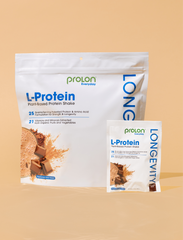
Muscle Mass & Longevity: Everything You Need to Know
When most people think of muscle mass, they picture strength and aesthetics. However, muscle is far more than a physical attribute—it’s a cornerstone of longevity and overall health. In fact, muscle mass plays a significant role in determining both lifespan and healthspan, the healthy years in your life; research consistently indicates that greater muscle mass is associated with lower mortality rates and reduced risks of chronic diseases, as highlighted by a study published in the American Journal of Medicine.
Understanding how muscle impacts your lifespan, why maintaining it is crucial, and how to optimize your lifestyle for healthy aging is essential for living longer and better.
What Are the Different Types of Muscle?
Your body comprises three main types of muscles:
-
Smooth Muscle: Involuntary muscles vital for processes such as digestion and circulation, found in internal organs including the stomach, intestines, and blood vessels.
-
Cardiac Muscle: Specialized life-sustaining muscle tissue found in the heart that contracts involuntarily to pump blood throughout your body.
-
Skeletal Muscle: Voluntary muscles attached to bones, allowing movement and supporting posture. These are the muscles most critical for metabolic health and longevity, and most impacted by strength training.
Why Is Muscle Mass Important for Longevity?
Muscle mass isn’t just an indicator of physical fitness—it’s a critical marker of metabolic health and resilience as you age, playing a pivotal role in enhancing longevity. It does so by addressing these key factors linked to aging and disease:
1. Boosts Metabolism
Muscle tissue is metabolically active, meaning it increases your resting metabolic rate (RMR). This helps you burn more calories even at rest, supporting weight management and energy balance.
2. Supports Bone Health
Muscle and bone health are closely linked. Healthy muscles support bone density, which can reduce the risk of fractures as you age.
3. Supports Healthy Weight
Having adequate muscle mass helps maintain a healthy body composition by reducing fat accumulation, lowering the risk of obesity-related conditions.
4. Regulates Blood Sugar and Insulin Sensitivity
Muscle is a critical site for glucose uptake. After meals, muscles absorb glucose from the bloodstream, storing it as glycogen or using it for energy. Healthy muscle mass improves insulin sensitivity, reducing the risk of insulin resistance, type 2 diabetes, and other metabolic conditions. With age-related muscle loss, these protective mechanisms weaken, contributing to elevated blood sugar and metabolic imbalances.
5. Reduces Risk of Cardiometabolic Diseases
Maintaining muscle mass is linked to a lower risk of type 2 diabetes, cardiovascular disease, and other metabolic disorders because it helps regulate blood sugar and insulin, key factors in preventing these conditions.
6. Counters Sarcopenia and Preserves Physical Function
Age-related muscle loss (sarcopenia) begins as early as your 30s or 40s and accelerates after 60. Sarcopenia can lead to reduced physical function, increased risk of falls, and overall frailty. Preserving muscle mass supports strength, balance, and mobility as you age.
7. Combats Chronic Inflammation
Chronic inflammation is a major driver of aging and diseases; muscle contraction during exercise releases anti-inflammatory cytokines (small proteins that regulate immune responses, inflammation, and cell communication), which help counteract it.
Longevity Diet Principles: How to Support Muscle Mass for Longevity
Building and maintaining muscle mass requires a balanced approach to lifestyle and nutrition. The Longevity Diet, inspired by the habits of populations with the highest concentrations of centenarians, offers key principles to support both muscle health and longevity.
Protein Type: The Longevity Diet follows a predominantly plant-based approach, supporting muscle health while avoiding the overstimulation of IGF-1 , a growth factor linked to accelerated aging when triggered by excessive protein consumption, especially from animal-based sources.
Protein Intake: If you are between the ages of 18-65, aim to consume 0.36 to 0.45 grams of protein per pound of body weight (ex: for someone who is 150 pounds, their daily protein intake should range between 55 to 68 grams). After the age of 65, slightly increasing protein intake up to 0.54g per pound of body weight each day can help counteract muscle and weight loss, especially when paired with strength-building exercises like weight training or bodyweight routines.
Physical Activity: Do moderate exercise for 2.5 to 5 hours a week, occasionally incorporating a vigorous pace, and strengthen muscles by using weight training or weight-free exercises.
Timing: To optimize muscle synthesis, consume 20–30 grams of plant-based protein within one hour of exercising. For intense workouts, aim for at least 25 grams of protein in a low-carb meal 1–2 hours post-training to enhance recovery and growth.
Periodic fasting: Periodic prolonged fasting with fasting mimicking diets such as Prolon 5-Day have been shown to promote cellular rejuvenation for healthy aging and support healthy metabolic markers, including reduced insulin resistance and improved blood sugar. And unlike traditional fasting methods that may cause muscle breakdown, Prolon’s formulation was specifically designed to protect lean muscle mass while targeting fat loss.
Muscle mass is more than a marker of strength; it’s a critical factor in how you age. Following principles of The Longevity Diet can help support longevity while building or maintaining crucial muscle mass - helping you live better for longer!












